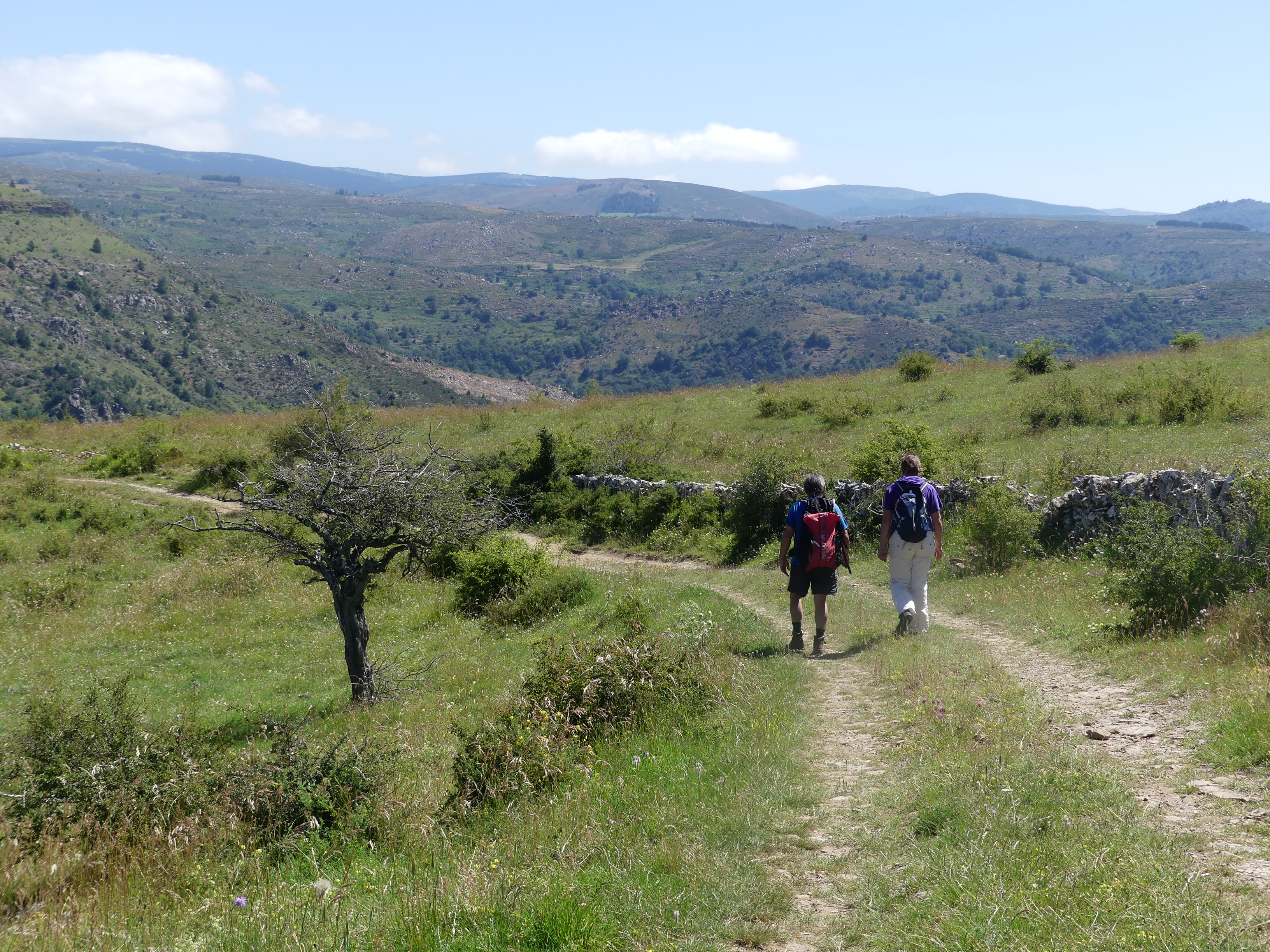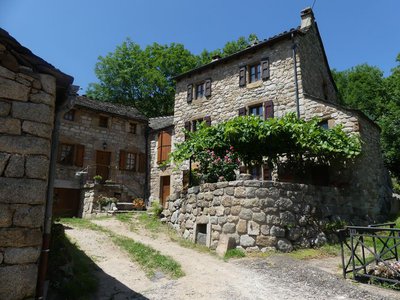Ruas

Les Bondons Yellow waymarks
Yellow waymarks
Ruas
Medium
2h30
5,9km
+368m
-368m
Loop
Embed this item to access it offline
From up here, you can make out the waterfall at Runes, Miral Castle, the hillocks of Les Bondons, standing stones, the Lozerette waterfall and, on the opposite slope, the hamlets of Le Cros and Les Bondons.
2 points of interest

Chabrières - © OTGCC nc  History
HistoryChabrières
On its rocky promontory dominating the valley, Chabrières used to have a castle, first recorded in 1251. It remains in the toponyms: Ron del Chastel, Prat Chastel (castle rock, castle field). Archive documents indicate that in 1380 the castle at Chabrières was in ruins. No document shows whether it was rebuilt after that date. The building on the rock at the top of the village is known as “the prison”.
“It’s called the tower, it’s said that at the time of the castle, it was a prison. In any case, there was no door to get in, there was a trapdoor on the roof. My father used to say that the owners had had to build a door to live there.”
Maison de Ruas - N. Thomas  Architecture
ArchitectureThe three bedrocks
The architecture of Ruas shows the ingenuity of builders in using the different types of bedrock available in the area according to their characteristics.
The granite blocks used for construction can weigh 300 to 500 kg and are chosen depending on their future place. They are sometimes used whole, at other times cut in two. The stonemason makes his hammer ring on the rock to detect any weakness by sound. Then, using wedges, he splits it – the sound changes when the rock is about to crack.
Limestone is easier to manipulate than granite and also easier to extract and shape. It is used for door and window frames and vaults.
Schist is layered; here it is used for flat slabs or as lauzes (stone tiles) that cover the roofs. Ruas schist is bluish.
Description
Take the road downhill and, at the first crossroads, turn right onto the road that goes uphill to Chabrières.
- In Chabrières follow the track uphill to the reservoir to the foot of the hillock.
- Walk around Le Puech on the left and, by the water trough, veer slightly left to cross the field and reach the stile, which you use to get over the fence.
- Turn right onto the track for 1 km. At the junction, turn right and immediately go right to reach the plateau edge.
- To the left of the rock, take a small path on the left downhill to the village of Ruas.
- By the iron cross, the old path has become too overgrown; walk just below it to a ravine. By the stone cross, follow the path that runs alongside the brook on the left to reach the village.
- At the road, turn right to return to the starting-point.
- Departure : Parking area between Ruas and the Chabrières junction.
- Arrival : Parking area between Ruas and the Chabrières junction.
- Towns crossed : Les Bondons and Bédouès-Cocurès
Forecast
Altimetric profile
Recommandations
Steep up hill and downhill sections; path without shade.
Make sure your equipment is appropriate for the day’s weather conditions. Remember that the weather changes quickly in the mountains. Take enough water, wear sturdy shoes and put on a hat. Please close all gates and barriers behind you.
Make sure your equipment is appropriate for the day’s weather conditions. Remember that the weather changes quickly in the mountains. Take enough water, wear sturdy shoes and put on a hat. Please close all gates and barriers behind you.
Access and parking
From Florac take the D 998 towards Pont-de-Montvert, then the D 35 towards Ruas.
Parking :
Between Ruas and the Chabrières junction, on the verge (park diagonally).
Calculateur d'itinéraire Lio
Utilisez le calculateur liO pour organiser votre trajet en région Occitanie.
Autres régions
Calculez votre itinéraire en Auvergne Rhône Alpes sur Oùra
Biodiversité autour de l'itinéraire
Source

Agence d'Attractivité Touristique Gorges Causses Cévenneshttp://www.cevennes-gorges-du-tarn.com

Parc national des Cévenneshttp://www.cevennes-parcnational.fr/
Report a problem or an error
If you have found an error on this page or if you have noticed any problems during your hike, please report them to us here:
